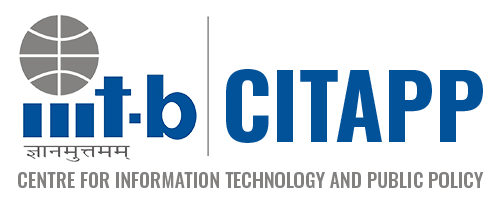Date: 12/10/22
About the talk: PhD student Arvind Upreti spoke on the Dynamics of Task Automation and its Effect on the Labour Market with a special focus on the IT Services Industry.
Abstract:
Analysis of the Dynamics of Task Automation and its Effect on the Labour Market: Case of IT Services Industry
The technical performance and deployments of automation have been rising steadily. The choices made by firms to deploy these technologies can have varying outcomes for workers in the labor market. Specifically, firms that focus on improving productivity and lowering costs in existing tasks can affect the labor market outcomes in complex ways. While the workers associated with tasks susceptible to automation can face displacement and downward pressure on wages, the workers skilled in hard-to-automate tasks can experience increased demand owing to the higher productivity of firms in the automated tasks. Out of the multiple interventions suggested by policymakers to ameliorate the condition of displaced workers, worker training and redeployment into the labor force stand out due to their economic and social appeal. To design such programs, it is imperative to understand the feasible pathways along which displaced workers can transition to occupations with lower risk of automation and better employment prospects. To this end, neoclassical economics has provided essential insights into the labor market dynamics. However, the focus has been on explaining the stylized facts about aggregate regularities and assuming hyper-rational and homogenous firms and workers. Evolutionary economics offers a plausible alternative by focusing on the interactions between heterogeneous agents and observing the co-evolution of aggregate variables in the labor market.
In this talk, we present an evolutionary model of labor market dynamics that explores the employment effects in the Information Technology (IT) services industry that undergoes technology shocks induced by automation. To develop our agent-based model (ABM), we used a combination of quantitative and qualitative data from the IT services industry. We collected qualitative data through semi-structured interviews with workers in the occupations that provide IT services. Data collected through such methods is rich and detailed about relationships among actors and descriptions of social processes. It can be used to design and validate relatively abstract agent-based models. We analyzed the interview transcripts to extract salient features to design and implement our ABM. We also collected data from respondents using scenario-based surveys, which use short descriptions of situations or persons to elicit judgments from the respondents about the scenarios. Scenario-based questionnaires have been used to design agent-based models as they relate closely to the decision-making process of the actors.
The themes that emerge from the qualitative data analysis provide valuable insights into the nature of tasks in the IT services firms that indicate their propensity for automation. Based on these themes, we propose a taxonomy using which tasks can be evaluated for automatability based on the — engineering complexity to perform, requirement to support continuous delivery of software features, human-centric skill requirement, and potential to yield a high return on invested capital. Similarly, the mobility pathways are constructed between a sample set of occupations in the IT services firms, using data gathered from the scenario-based questions. These pathways indicate the options for the workers to retrain between occupations to adjust to the displacement effects of automation. Using this empirical data, we develop an agent-based model that represents the labor market of the IT services industry, where firms and workers are bounded-rational agents. Firms produce and sell a homogenous service by combining the outputs of a task-set generated by either labor or machines. Workers are heterogeneously skilled in the task-set, hold an adaptable expectation of wages based on their skills and search for vacancies available in the labor market. The economy undergoes a sequence of technology shocks during which automation diffuses in the industry, and firms stochastically automate a subset of their tasks. The workers displaced due to automation of tasks of an occupation can move along the occupation mobility pathways. Interactions between agents generate the macro-dynamics observable through aggregate variables such as unemployment levels and wage inequality among workers. Simulation results indicate distinct tipping points for unemployment and wage inequality with changes in the proportion of workers who decide to adjust by retraining and moving along occupation mobility pathways. The effects are also distinct for different occupations of the IT services industry due to the nature of tasks associated with them.
CITAPP Colloquium is a monthly effort for students and research staff working within the domain of IT and Society to present their ongoing work.

